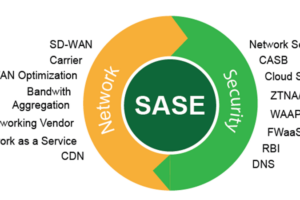The Evolution of Influencer Codes: Looking to the Future, As influencer marketing continues to mature, the use of influencer codes is likely to evolve, offering new opportunities and challenges for brands and influencers alike.
1. Diversification of Platforms:
While Instagram and YouTube have traditionally been the go-to platforms for influencer marketing, emerging platforms and features may reshape the landscape. Short-form video platforms like TikTok and new features on existing platforms will likely influence the way influencer codes are shared and consumed.
2. Interactive and Shoppable Content:
The integration of influencer codes with interactive and shoppable content is a trend on the rise. Features like Instagram’s shoppable posts and stories allow influencers to seamlessly incorporate their codes into clickable, purchase-enabled content, streamlining the user experience and further boosting conversion rates.
3. Micro-Influencers and Niche Markets:
As the influencer marketing sphere broadens, micro-influencers and influencers in niche markets are gaining prominence. Brands are recognizing the potential of smaller, more engaged audiences, and influencer codes can be tailored to these specific segments, creating highly targeted marketing efforts.
4. Authenticity and Transparency:
Consumers are becoming increasingly discerning, valuing authenticity and transparency. Influencers who maintain genuine connections with their audience and promote products with sincerity are more likely to succeed. As a result, influencer codes that are seamlessly integrated into the influencer’s content and align with their personal brand will continue to yield the best results.
5. Innovative Campaigns and Collaborations:
Brands are expected to explore more creative and innovative campaigns in collaboration with influencers. This might involve exclusive product launches, limited-time promotions, or interactive challenges that encourage user participation. Influencer codes will play a crucial role in these strategies, driving engagement and sales.
6. Enhanced Data Analytics:
The demand for more robust data analytics in influencer marketing will persist. Brands will seek more sophisticated tools to track the performance of influencer codes, measure customer behavior, and attribute conversions accurately. This data-driven approach will enable brands to refine their strategies and optimize their return on investment.
The Rise of Influencer Marketing:
In recent years, influencer marketing has witnessed exponential growth, transforming from a niche strategy into a mainstream advertising channel. Influencers, who are often social media personalities with a dedicated following, have proven to be effective in promoting products and services authentically. With their ability to create genuine connections with their audience, influencers have become invaluable assets for brands looking to enhance their online presence.
Understanding Influencer Codes:
Influencer codes are personalized discount or promotional codes that influencers share with their followers. These codes are unique to each influencer and are often tied to specific marketing campaigns or partnerships with brands. The primary purpose of influencer codes is to incentivize followers to make purchases using the provided code, thereby tracking the success of the influencer’s promotional efforts.
Key Elements of Influencer Codes:
-
Exclusivity: Influencer codes are often framed as exclusive offers for the influencer’s audience, creating a sense of privilege and exclusivity for followers. This exclusivity not only encourages brand loyalty but also drives followers to act on the promotional offer.
-
Tracking and Analytics: One of the significant advantages of influencer codes for brands is the ability to track the success of a campaign. By monitoring the usage and performance of each influencer code, brands can measure the return on investment (ROI) and assess the effectiveness of their influencer marketing strategy.
-
Authenticity: Influencers are trusted by their followers, and when influencers promote a product using a personalized code, it adds an element of authenticity to the endorsement. Followers are more likely to engage with the brand and make a purchase based on the influencer’s recommendation.
-
Collaborative Partnerships: Influencer codes facilitate collaborative partnerships between influencers and brands. By providing influencers with unique codes, brands can tailor their marketing efforts to the influencer’s audience, ensuring a more targeted and effective promotional campaign.
Benefits for Brands:
-
Increased Sales: The primary goal of influencer codes is to drive sales, and many brands experience a significant boost in revenue during and after influencer marketing campaigns.
-
Enhanced Brand Visibility: Influencer codes amplify brand visibility as influencers share them across their platforms. This increased exposure can attract new customers and strengthen brand recognition.
-
Data-driven Insights: The tracking and analytics associated with influencer codes provide valuable insights into consumer behavior, preferences, and the success of specific marketing campaigns.
Conclusion:
Influencer codes have not only become a staple in the influencer marketing toolkit but also a dynamic element that adapts to the changing landscape of digital marketing. As technology advances, social media platforms evolve, and consumer behaviors shift, influencer codes will likely undergo further transformations, offering both challenges and opportunities for brands and influencers.
For marketers, staying abreast of these developments and being willing to experiment with new strategies will be crucial. The fusion of creativity, authenticity, and data-driven insights will continue to define successful influencer marketing campaigns, making influencer codes an enduring and influential force in the realm of digital advertising.










